The development of the space shuttle in the 1970s required several new technologies, including powerful reusable engines fueled by liquid hydrogen and liquid oxygen. Development of the Space Shuttle Main Engines (SSMEs) began in 1971.
The development of the space shuttle in the 1970s required several new technologies, including powerful reusable engines fueled by liquid hydrogen and liquid oxygen. Development of the Space Shuttle Main Engines (SSMEs) began in 1971. At what is now NASA’s Stennis Space Center in Mississippi, workers adapted facilities originally built to test engines and rocket stages for the Apollo program to test the SSMEs. Single-engine tests began in May 1975, while three-engine tests using the Main Propulsion Test Assembly (MPTA) began on April 21, 1978. Engineers completed hundreds of test firings to certify the SSMEs for the space shuttle’s inaugural flight in April 1981. Test firings to evaluate upgrades to the SSMEs continued until 2009. Engineers use the same facilities to test and certify engines to support Artemis missions to the Moon and beyond.
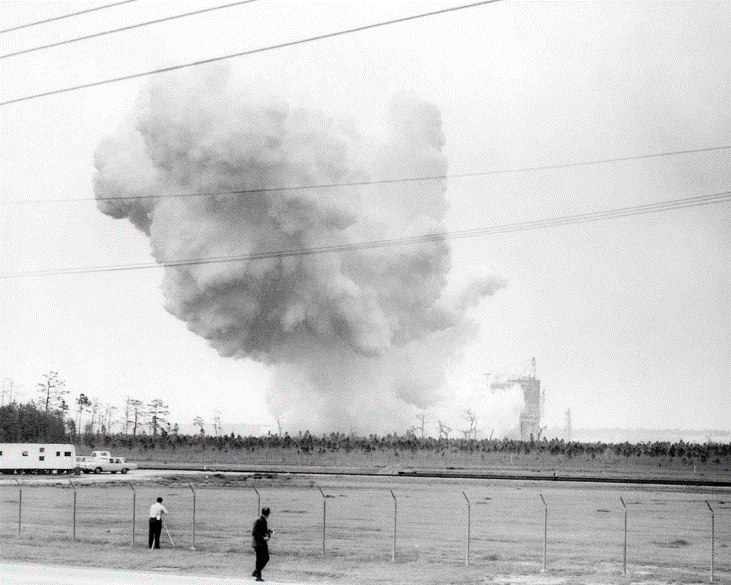
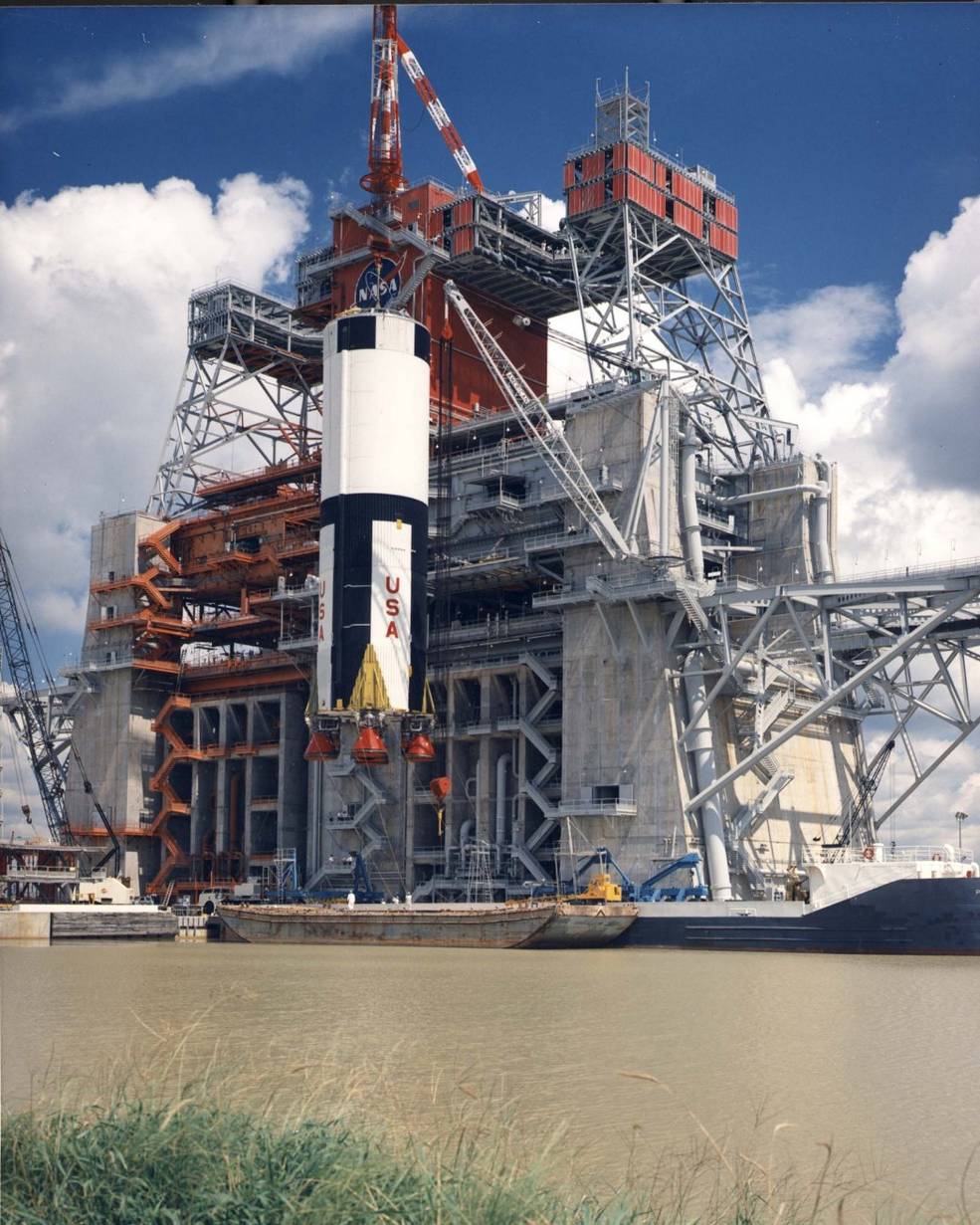
Left: The first static firing of the S-II-T/D, the first rocket stage tested at the Mississippi Test Facility (MTF),
now NASA’s Stennis Space Center. Middle: Ground crews place the S-IC-T Saturn V test stage in the B-2
test stand. Right: The first test firing of S-IC-T, a test Saturn V first stage.
On Oct. 25, 1961, NASA announced the decision to build the Mississippi Test Operations, now NASA’s Stennis Space Center, in Hancock County, Mississippi. Because NASA tested Saturn V rocket first and second stages at MTO, locals originated the saying, “If you want to go to the Moon, you first have to go through Hancock County, Mississippi.” On April 23, 1966, with MTO renamed the Mississippi Test Facility (MTF) the previous year and part of NASA’s Marshall Space Flight Center in Huntsville, Alabama, engineers conducted the first static fire, a 15-second firing of S-II-T/D, a test variant of a Saturn V second stage, in MTF’s A-1 Test Stand, renamed the Fred Haise Test Stand in March 2020 after the Apollo 13 astronaut. In the larger B-2 Test Stand, on March 3, 1967, workers completed the first static firing of S-IC-T, a test version of a Saturn V first stage. The facility tested all subsequent Saturn V first and second flight stages, the last one occurring on Nov. 4, 1970, for the Saturn V of the cancelled Apollo 19 mission.
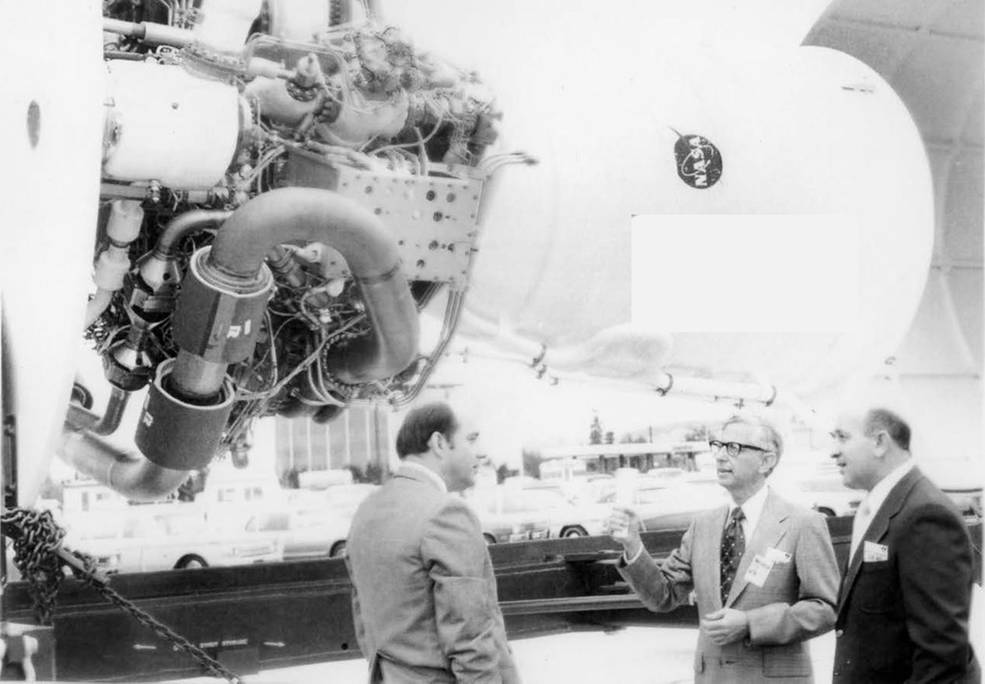
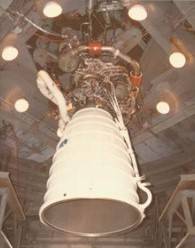
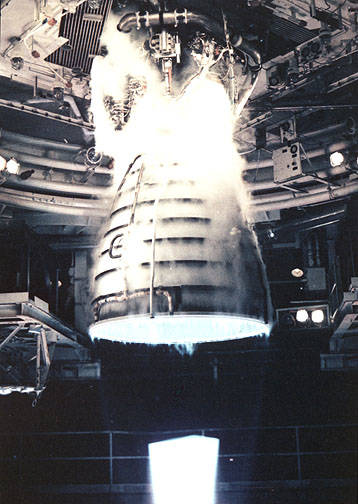
Left: NASA managers take delivery of Space Shuttle Main Engine (SSME) 0001, also known as the Integrated
Subsystem Test Bed (ISTB). Middle: The ISTB in Test Stand A-1 at the National Space Transportation
Laboratory (NSTL), now NASA’s Stennis Space Center, prior to its first test firing.
Right: A SSME during a static test fire at NSTL.
Following the end of the Apollo and Skylab programs that utilized Saturn rockets, the MTF experienced a short hiatus in engine and stage testing. In July 1971, NASA’s Marshall Space Flight Center in Huntsville, Alabama, awarded the contract to the Rocketdyne Division of North American Rockwell to design, develop, manufacture, and test the reusable SSME, the most powerful cryogenic engine at the time, generating 375,000 pounds of thrust at sea level and 475,000 pounds of thrust at vacuum. Testing of the new engines would take place at the MTF, renamed in 1974 the National Space Transportation Laboratory (NSTL) and reporting to NASA Headquarters in Washington, D.C. Ground crews modified Test Stands A-1 and A-2 for static firings of single SSMEs. In March 1975, Rocketdyne completed the prototype engine SSME 0001, also known as the Integrated Subsystem Test Bed (ISTB). The ISTB, larger and heavier than a flight SSME, completed its first test without an ignition on May 19, 1975, followed by first ignition on June 24, in Test Stand A-1. Testing of the second and third development engines took place in 1976 and 1977, with more than 150 engine firings and a cumulative run time of 3,500 seconds completed. The tests uncovered significant technical issues, especially with the engine’s high-pressure fuel turbopump. Testing continued into 1978, with the fifth engine the first to run at full 100 percent rated power for a full flight duration of 520 seconds on May 10. By the end of 1978, the SSME test program had accumulated more than 34,000 seconds in 394 firings. Flight certification of the SSMEs in preparation for STS-1 began in 1979 and ended in December 1980. The three engines assigned to the STS-1 mission began acceptance testing in April 1979, with each engine undergoing a 1.5-second start verification, a 100-second calibration firing, and a 520-second flight demonstration test. Following completion of the tests, engineers shipped the engines to NASA’s Kennedy Space Center (KSC) in Florida for installation onto space shuttle Columbia in July 1980. A 20-second Flight Readiness Firing at KSC’s Launch Pad 39A on Feb. 20, 1981, verified the engines’ readiness for launch.
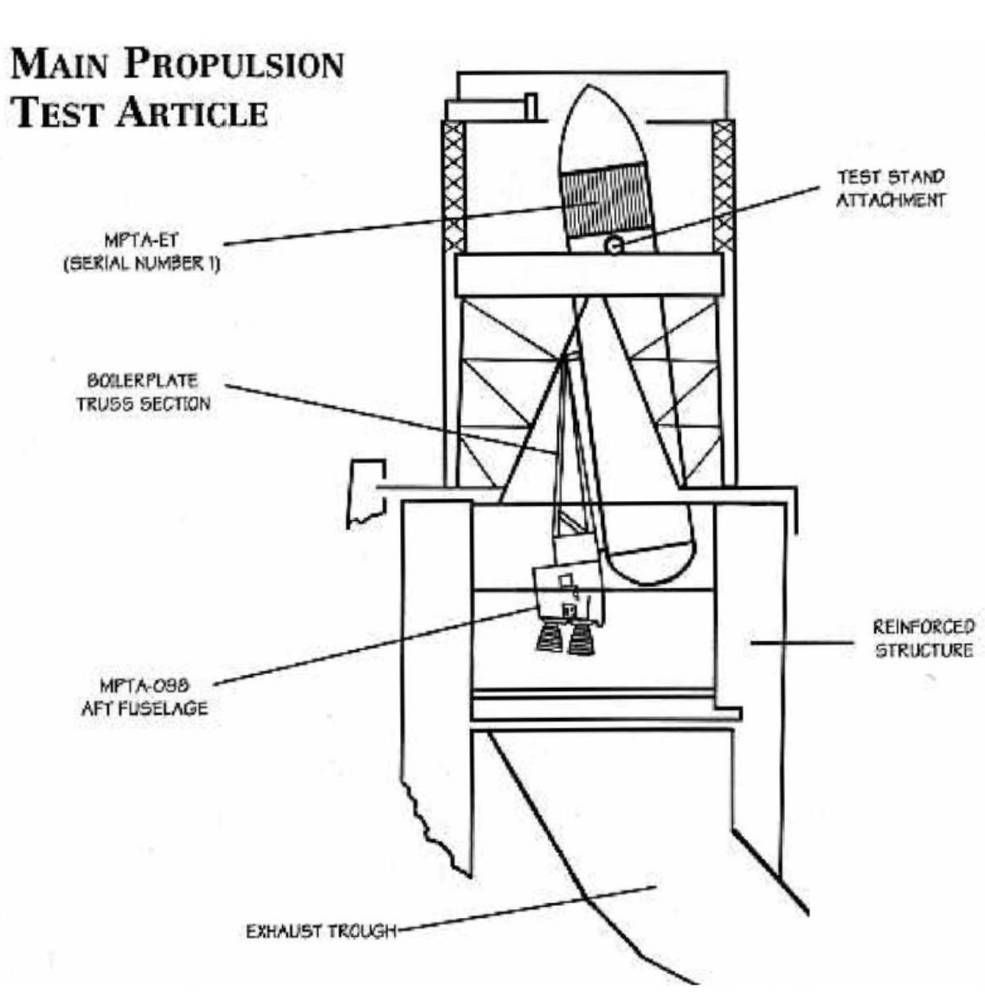
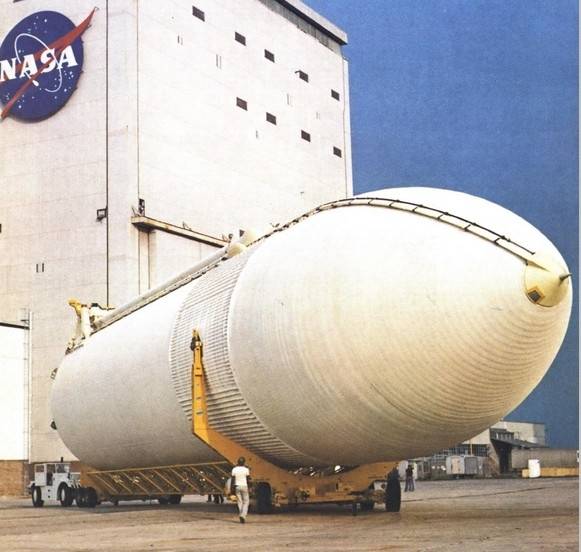
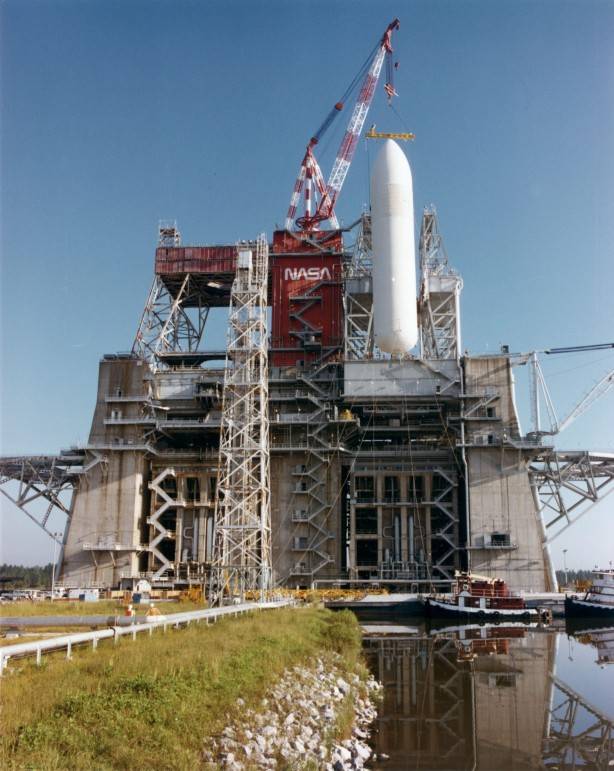
Left: Schematic illustration of the Main Propulsion Test Article (MPTA) in the B-2 test stand at the National Space
Transportation Laboratory (NSTL), now NASA’s Stennis Space Center in Mississippi. Middle: Rollout of the first
External Tank (ET-01) at the Michoud Assembly Facility near New Orleans.
Right: Workers lower ET-01 in the B-2 Test Stand at NSTL.
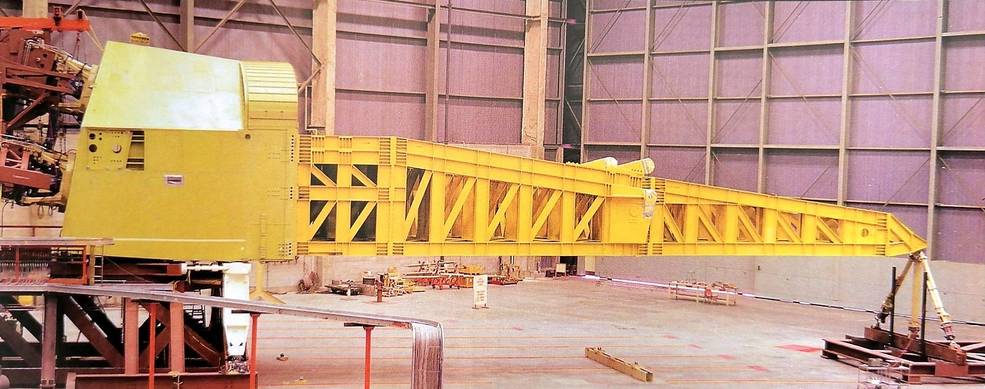
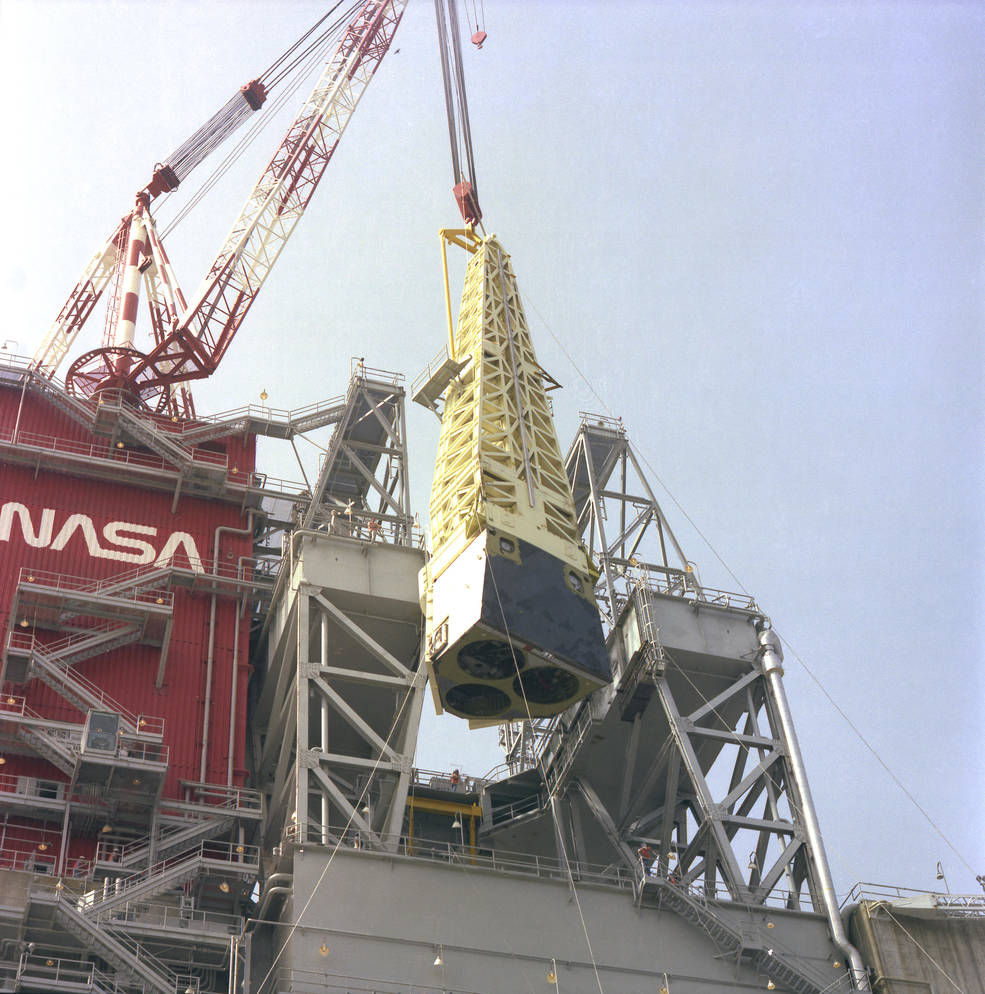
Left: The Main Propulsion Test Article-098 (MPTA-098) during construction at the North American
Rockwell plant in Palmdale, California. Right: Workers prepare to lower the MPTA-098 into the
B-2 Test Stand at the National Space Transportation Laboratory, now NASA’s Stennis
Space Center in Mississippi.
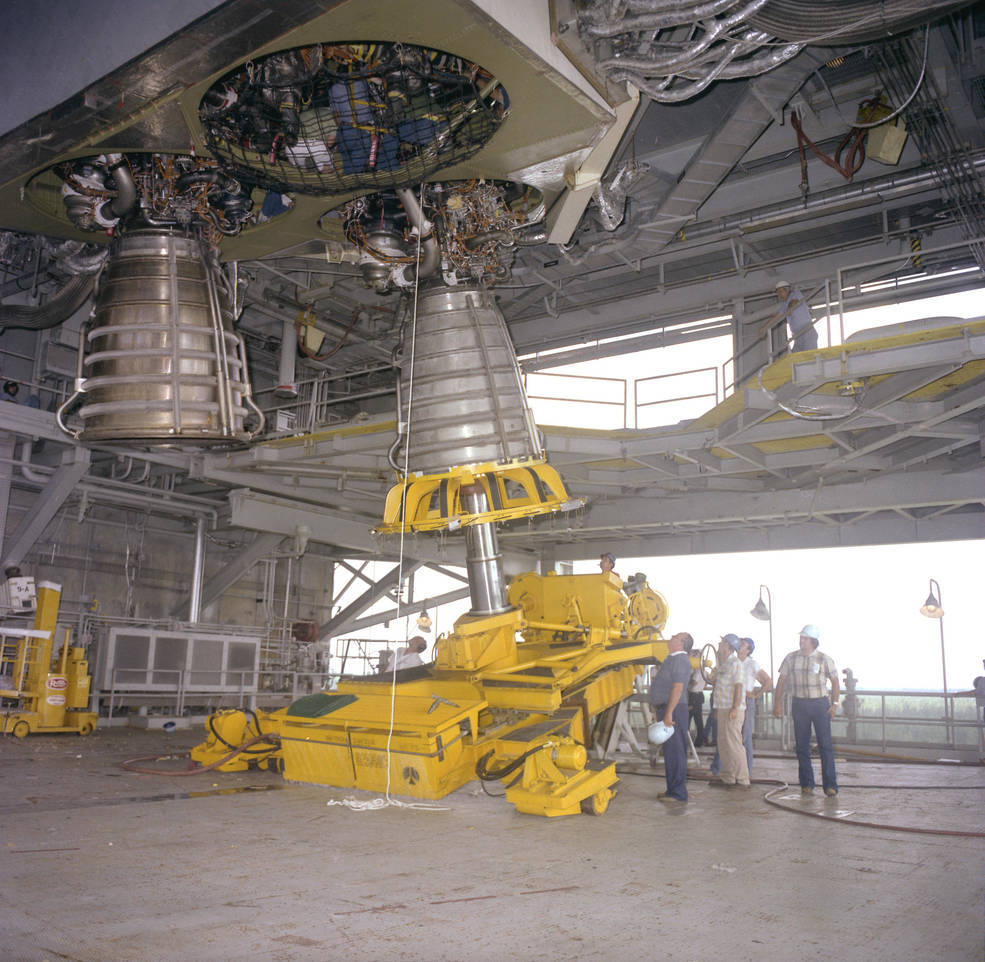
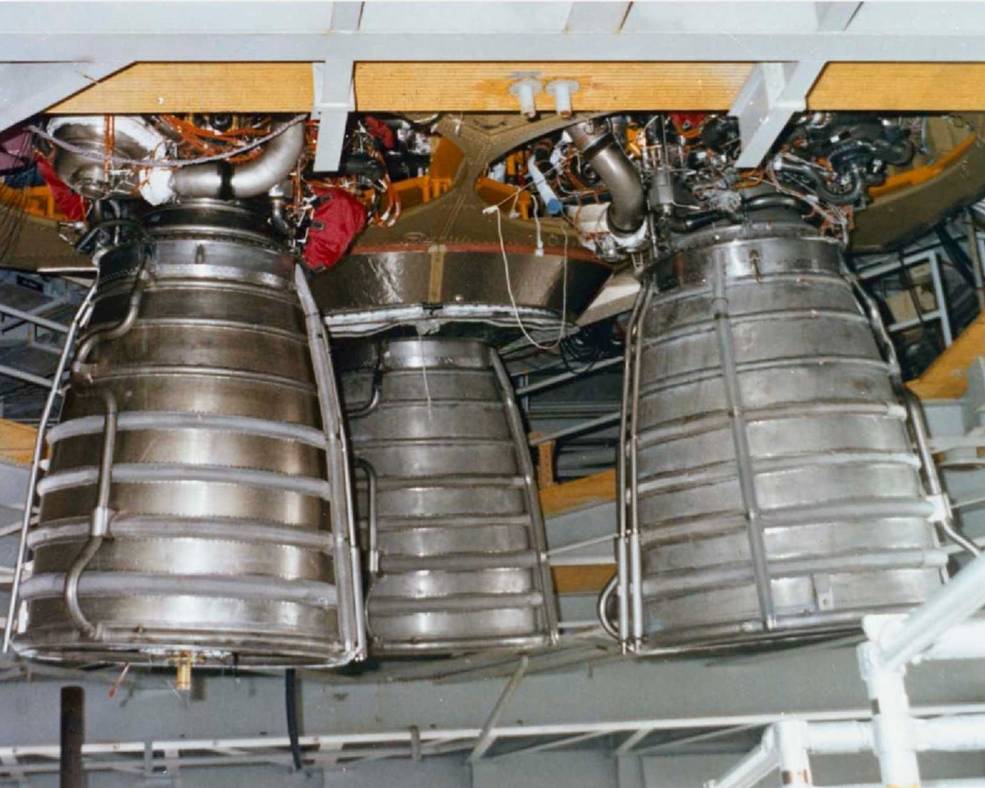
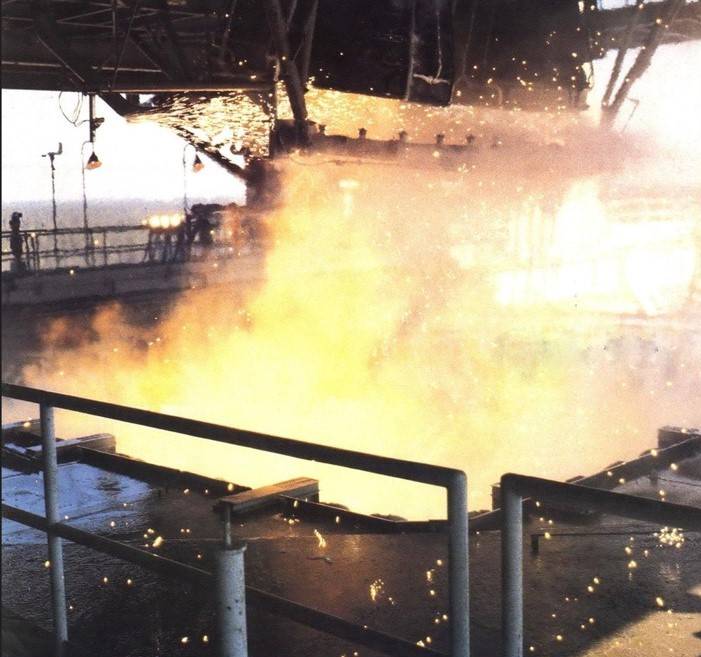
Left: Workers install three Space Shuttle Main Engines (SSMEs) onto the Main Propulsion Test
Article (MPTA) in Test Stand B-2 at the National Space Transportation Laboratory (NSTL),
now NASA’s Stennis Space Center. Middle: Three SSMEs mounted onto the MPTA in Test
Stand B-2. Right: Final test of three SSMEs using the MPTA, three months before
STS-1, the first launch of space shuttle Columbia.
While single-engine tests remained critical in the SSME testing and certification program, multi-engine testing prior to the first shuttle flight provided a more realistic scenario of how the entire propulsion system would behave during an actual launch. Rockwell’s Space Division in Palmdale, California, builder of the shuttle orbiters, constructed the MPTA-098, consisting of a flight-weight shuttle aft fuselage accommodating three SSMEs and a simulated orbiter midbody. An attached flight-like External Tank (ET) delivered liquid hydrogen and liquid oxygen to the engines. Ground crews installed the MPTA and ET onto Test Stand B-2, with the first static firing taking place on April 21, 1978. An anomaly resulted in the termination of the scheduled 2.35-second firing after just one second. The next, 15-second test firing on May 19 marked the first major test firing of the shuttle’s main propulsion system. Engineers completed a series of 18 test firings, of which six lasted at least 520 seconds, the expected duration of a shuttle’s powered ascent to orbit. Several of the later tests included gimbaling of the engines, a critical function for steering the shuttle during ascent. The final test on Jan. 17, 1981, just three months before the STS-1 mission, lasted 625 seconds. This video shows a MPTA test firing. To prepare for STS-1, engineers tested 21 engines, including the three that flew on Columbia’s first flight, over the course of 575 single-engine tests and the 18 MPTA tests, accruing more than 87,000 seconds of engine run time. The three engines aboard Columbia performed flawlessly during its April 12, 1981, inaugural launch. The MPTA and the ET remained in the test stand until February 1988. The multiple thermal cycles from loading cryogenic propellants caused the ET’s white foam insulation to disintegrate, so workers replaced it with the same orange-colored foam insulation used on flight ETs.
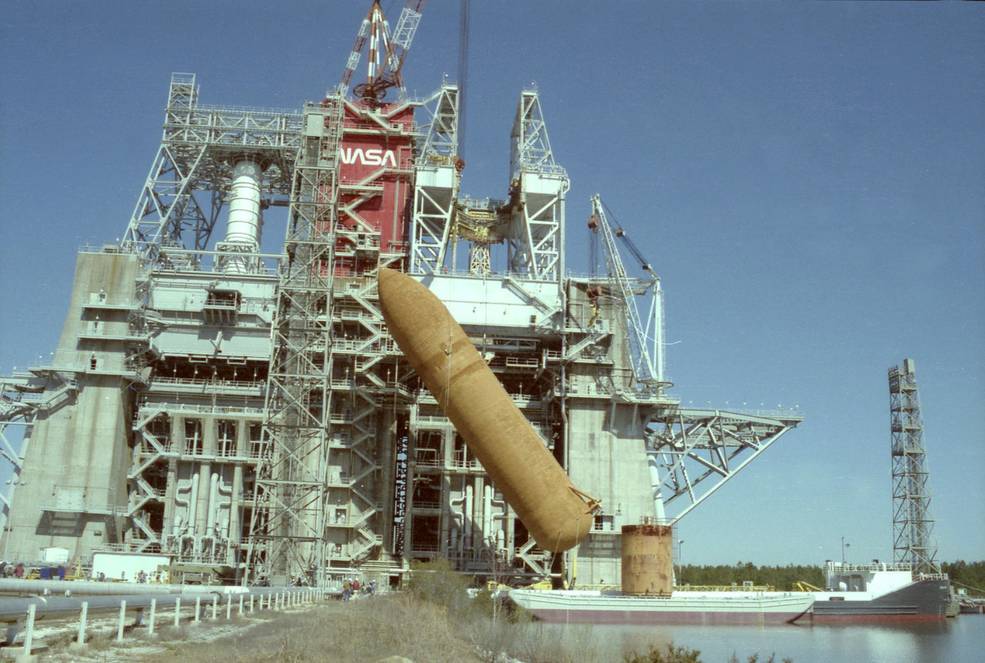
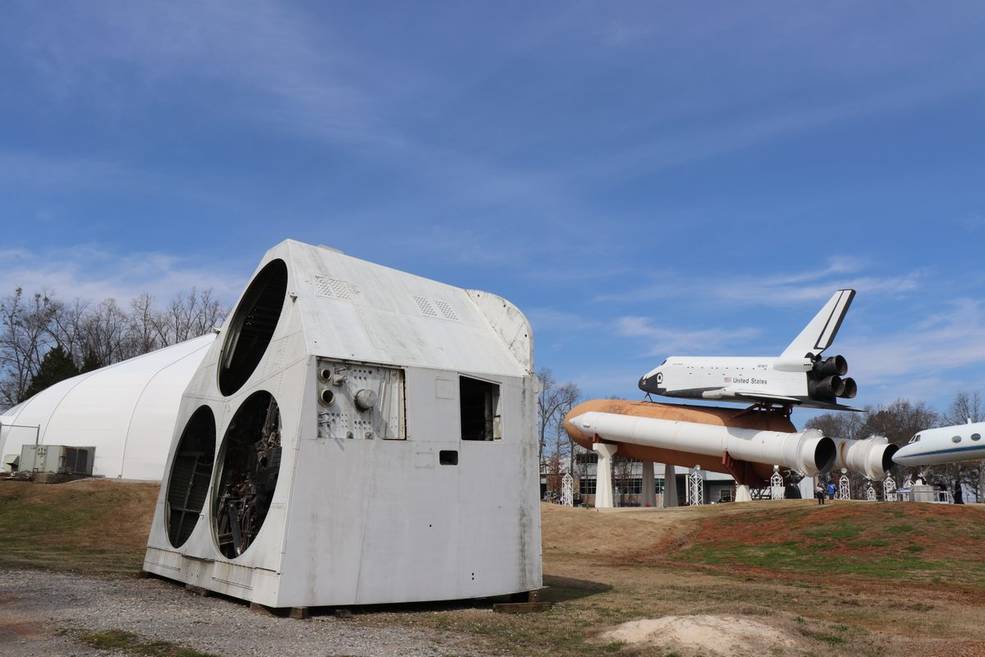
Left: Ground crews remove External Tank 01 (ET-01), used in conjunction with Main Propulsion Test
Assembly (MPTA) firings, from Test Stand B-2 at NASA’s Stennis Space Center in 1988.
Right: The ET-01 as it appears today assembled with two prototype solid rocket
boosters and the space shuttle orbiter simulator Pathfinder at the U.S. Space
and Rocket Center in Huntsville, Alabama, with the MPTA aft fuselage on
display in the foreground.
Image credit: courtesy Robert Rose.
The flight of STS-1 did not end SSME testing at NSTL, renamed NASA’s John C. Stennis Space Center in May 1988. Upgrades to the engines to operate at 104 percent and 109 percent of rated thrust required test firings for certification, as did the introduction of periodic engine upgrades, such as the full-power engines aboard Challenger’s first flight in 1983, Phase II engines in 1988, Block I and IA engines in 1995, Block IIA engines in 1998, and Block II engines in 2001. Until July 29, 2009, when the final SSME test took place in the A-2 Test Stand, engineers completed 2,307 test firings, accumulating 820,475.68 seconds (228 hours) of hot fire time. The National Park Service declared the test stands a National Historic Landmark in 1985. Over the course of the space shuttle program, 46 SSMEs flew on 135 launches, for a total of 405 engine missions.
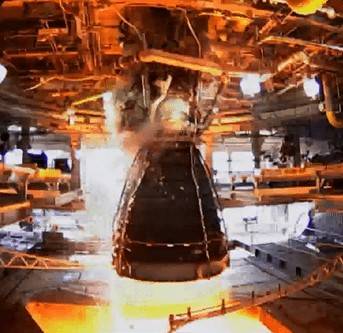
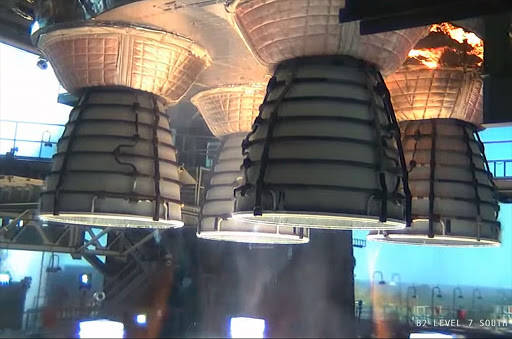
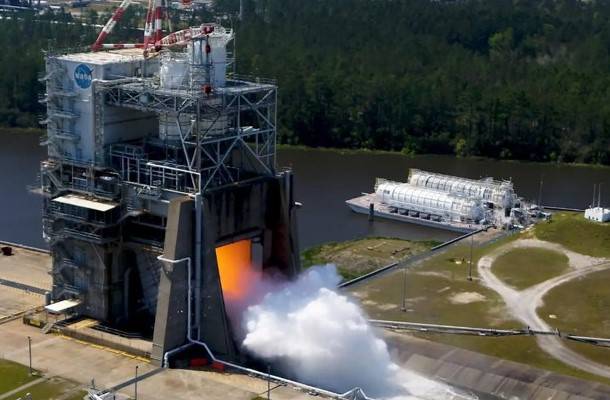
Left: Static test fire of a RS-25 engine for the Space Launch System (SLS) core stage in the Fred Haise Test
Stand at NASA’s Stennis Space Center. Middle: Full duration static fire of the SLS core stage’s four
RS-25 engines in Stennis’ B-2 Test Stand. Right: Static fire test of an upgraded RS-25
engine in the Fred Haise Test Stand.
With the end of the space shuttle program in 2011, Stennis turned its attention to future exploration missions. On April 4, 2019, technicians completed testing all 16 SSMEs remaining from the shuttle program, now called RS-25 engines, and planned for use in the Space Launch System’s (SLS) core stage to power the Artemis program to send Orion capsules and eventually astronauts to the Moon. A second round of RS-25 testing, called the Green Run, began in January 2020 and culminated with a test in the B-2 stand involving four RS-25 engines mounted on the core stage of the SLS rocket destined to launch the Artemis I mission to the Moon. The first test on Jan. 16, 2021, ended after a little over one minute, but a second test on March 18 completed the full duration 500-second firing. Following the test, ground crews shipped the core stage to KSC to prepare it for the Artemis I launch that took place on Nov. 16, 2022. Testing continues at the Fred Haise Test Stand to certify upgraded RS-25 engines for future Artemis deep space missions. Once again, the old saying holds true, “If you want to go to the Moon, you first have to go through Hancock County, Mississippi.”




























